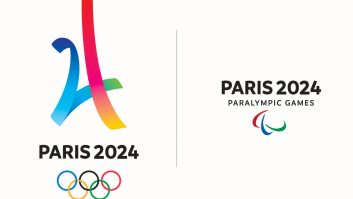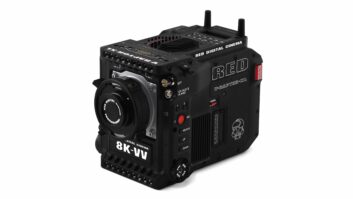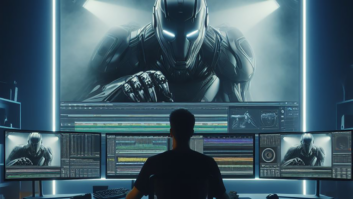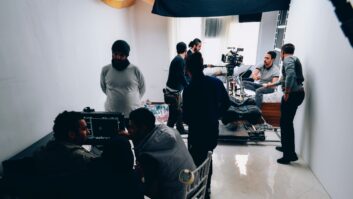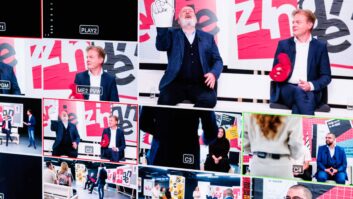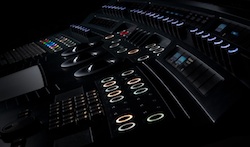
Technology developers have to think several years ahead of the market in order to put product on the table ahead of the curve, but it still seems remarkable that some are putting R&D behind a format that, if anything, is not next generation but a future generation.
Quantel, though, has decades of solid track record in this regard. It placed bets on stereoscopic 3D before any other manufacturer, and while that has not taken off as many had hoped, the company says it has cracked 4K and is training its thoughts on the practicalities of producing higher resolutions.
Actually, that should be production at higher data rates since that’s what greater pixel density, dynamic range, frame rates and so on boils down to.
“It’s a fantastic time to be a visionary in the industry, to think about how we can employ all this new capability,” said Steve Owen, director of marketing, Quantel.
“A couple of years ago everyone was very excited about 3D – us included. But 3D is part of our visual landscape now and I think we will see the same for 4K. It will become a standard part of our visual landscape.”
He continued: “You’ve got to give credit to [Japanese broadcaster] NHK for talking about 8K. They are pushing boundaries and its up to us to rise to the challenge. NHK, TV Globo and the BBC are interested in seeing where they need to get to in terms of resolution for any conceivable size of screen that will mean we don’t ever need to increase the resolution again.
“In my opinion 8K is that ultimate format. I can’t see a reason why you’d need resolutions beyond that.”
An eye-catching NAB demo of an 8K workflow was shown on the Quantel booth where a 65mm IMAX sequence scanned to 8192 x 6144 was played back and rescaled to 4K in realtime over the Pablo Rio finishing platform. Powered by Nvidia Maximus GPUs the system was capable of nine layers of 4K grading without rendering.
4K output was enabled by a AJA Corvid Ultra (pictured) card and the whole workstation represented the first time Quantel has offered a software-only solution.
“It was just fun to show how a desktop PC could play back 8K off the disk,” said Owen. “It was pulling 100GBps off the drives in real time, playing it, manipulating it, adding LUTs and then sizing it down to a 4K proxy display on the screen in real time.”
This was all a handy showcase of course for Quantel’s ability to post produce at the ‘lower’ resolution 4K 60fps on the $30,000 software Pablo Rio running off standard PC hardware.
V2.0 rev3 of Pablo supported by Nvidia Keplar K20 GPUs in Quantel’s turnkey systems offers, it claimed, another 50% more processing power. It also offers realtime playback of Sony F65 files in QuickTime ProRes.
“4K has now moved out of the upper stratosphere and has become a practical technology that can be applied throughout our industry,” said Owen. “4K changes the game and we all have to relearn how to do things. Not only is 4K about a lot more picture information, at the same time you can capture more of the dynamic range. From traditional 10-bit we are moving to 16 bit.”
LA post house Light Iron post produced two 4K projects on Pablo including David Fincher’s Red Epic shoot for The Girl with the Dragon Tattoo and the slow motion and timelapse photography of Tom Lowe’s Timescapes shot on Epics and a Canon Mark III DSLR and graded in 16-bit colour.
“This [data] creates new challenges. It’s all very well to talk about 4K 60fps but it is not an insignificant challenge to deal with that amount of data.”
The typical data rate of traditional film 4K is 10Gbps, which translates to 3-4TB an hour of storage, he said. “That’s already a reasonable chunk. If you push that into high frame rates you are increasing the data rate 2.5x, which equates to 25GBps or 10TB an hour.
“It is a big challenge to streamline workflows that can handle that amount of information, but the technology is becoming available. Certainly 4K 60fps is a challenge, but it is practical, and nor do you have to spend hundreds of thousands of dollars on it,” he added.
“4K is here to stay. If people are shooting content today they are probably shooting it on 4K-capable cameras so in post you have a future-proofed asset. We are now seeing the potential for 4K to make a better quality HD experience for documentaries or drama or live sports – and this is just the tip of the iceberg.”
By Adrian Pennington
